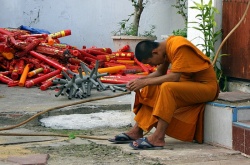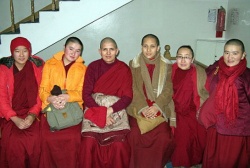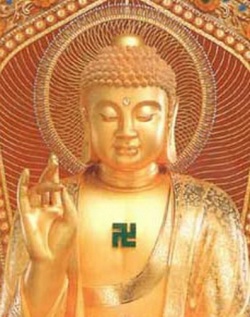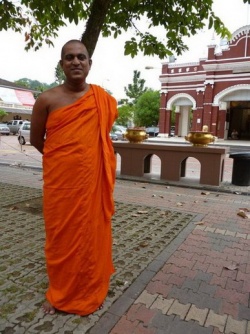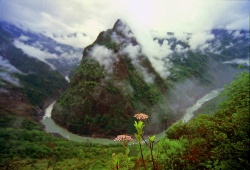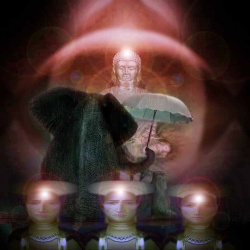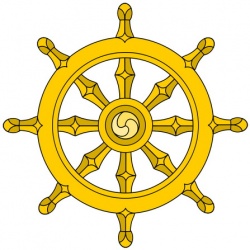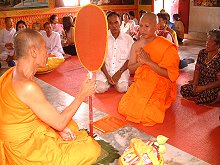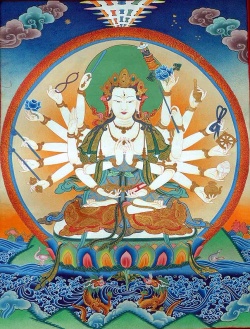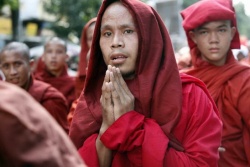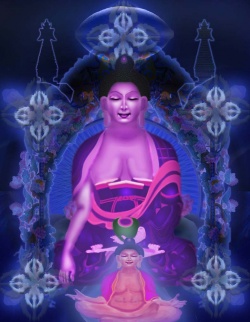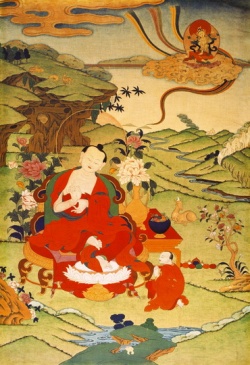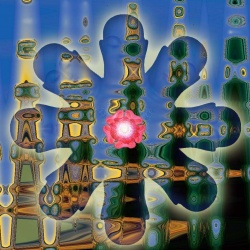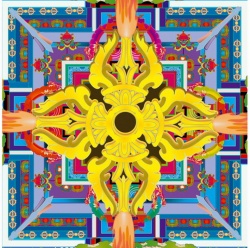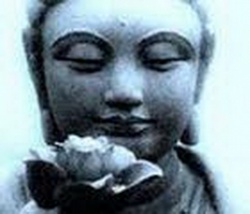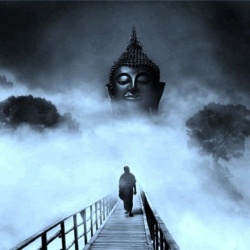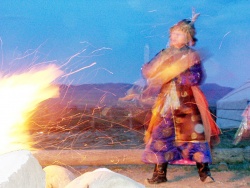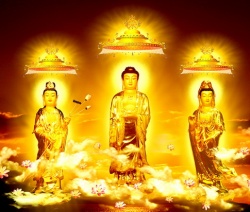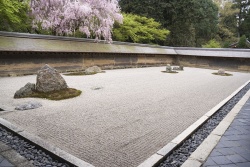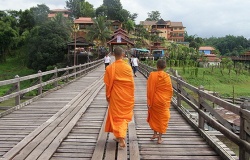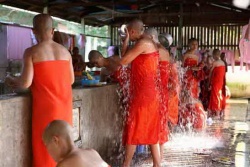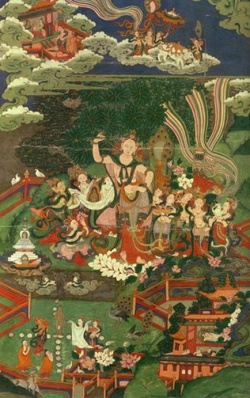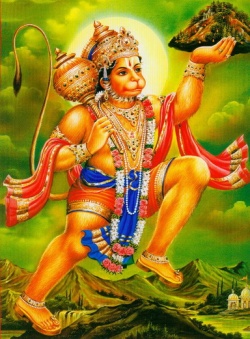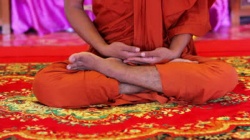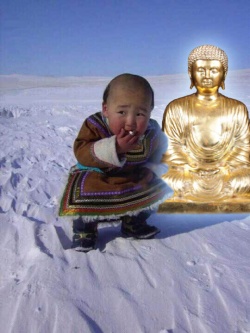Korean Buddhism: A Short Overview
Charles Muller
First Published: July, 1996; Updated: August 14, 2003
Table of Contents
1. Introduction
2. Three Kingdoms (三國) Buddhism
3. Unified Silla Period (統一新羅; 668-918)
4. Goryeo Period (高麗; 918-1392)
5. Joseon Period (朝鮮; 1392-1909)
Bibliography
1. Introduction
Since Korean Buddhism has come to the attention of Western scholarship rather late compared with Chinese and Japanese Buddhism, it still lies, with its deep store of untouched resources, almost fully open forexploration. And while early ignorance regarding the Korean Buddhist tradition lent to some degree of uninformed glossing over from preconceptions drawn from models in Chinese and Japanese Buddhism, scholars of East Asian Buddhism nowadays are generally becoming aware of the important role of Korean Buddhism in the East Asian religious/philosophical sphere.
The most distinctive general characteristic that can be seen in the Korean Buddhist tradition is the tendency for its most noted thinkers to be holistic in the interpretation of doctrine and to be exasperatingly thorough in the resolution of doctrinal and "loose ends" passed on from Buddhist predecessors.
1 Korean scholars and monks not only devoted unusually large portions of their time and energy toward the resolution of sectarian debates and apparent doctrinal inconsistencies; they produced a strain of Buddhism of a significantly new character from that which had been initially transmitted to them. This Korean ethnic color of Buddhism, termed by its most important exponent Wonhyo (元曉; 617-686) as tong bulgyo (通佛教 "interpenetrated Buddhism" ) remanifests itself in various forms in the works of one major Korean thinker after another throughout the history of the tradition.2
Being geographically contiguous with China, the history and development of culture on the Korean peninsula is strongly influenced by that of the continent, especially during earlier periods when Chinese culture was so advanced as compared with that of its neighbors. The transmission of Buddhism to Korea from China happened along with the importation of Chinese ideographic writing and various other currents of Chinese philosophy, as well as medicine, arts and societal customs. Korea was also the source of the initial Buddhist transmission into Japan, remaining in this role for several centuries.
2. Three Kingdoms (三國) Buddhism
The Three Kingdoms of early Korea began to take actual formation during the third and fourth centuries, as the various tribal leagues gradually developed larger and more stable alliances. The first kingdom to take form was Goguryeo (高句麗) in the northern part of the peninsula. Goguryeo was soon followed by the establishment of Baekje (百濟) in the southwest and a bit later by Silla (新羅) in the southeast. During the second half of the fourth century, the Goguryeo king Sosurim (小獸林 r. 371-383) began to develop close ties with the former Qin, ruled at the time by Fujian (符堅 r. 357-384),3 and these ties further contributed to the reception of culture into the Korean peninsula. The official date for the introduction of Buddhism into Goguryeo is 372, with the dispatch of the monk Sundo (順道; Ch. Shundao) by Fujian to the court of Sosurim with scriptures and Buddhist images. Shortly afterward, in 384, the Serindian monk Maranant'a (Mālānanda 摩羅難陀) arrived to Baekje from the Eastern Chin. Due to Silla's relatively isolated geographical location, the official date for its reception of Buddhism was a bit later, most likely during the fifth century.4 But since there is evidence that the significance of these early Chinese Buddhist missions into Korea was well understood by the Koreans in advance, it is commonly assumed that Buddhism was known to these regions well before these official dates.
Although there is evidence for the existence of Sarvāstivāda,5 Cheontae (Ch. Tiantai 天台宗) and Satyasiddhi (Ch. Chengshi 成實宗)6 studies during this early period, the most popular initial forms of Buddhism were initially: the Samnon (Ch. Sanlun, 三論宗 ) school, which focused on the Indian Mādhyamika (Middle Path) doctrine,7 and was initially popular in Goguryeo and Baekje; the Gyeyul (Skt. Vinaya; 戒律宗) school, which focused on study and implementation of moral discipline (śīla), also initially popular in Baekje; and the Yeolban (Skt. Nirvāna; 涅槃 宗) school, which was based in the themes of the Mahāparinirvāna-sūtra,8 and initially popular in Silla. Toward the end of the three kingdoms period, the Weonyung (Ch. Yuanrong; 圓融宗 ) school, which focused on the actualization of the metaphysics of interpenetration as found in the Huayan jing 華嚴經, would outstrip most of the other schools as a field of academic study, becoming especially popular with the educated aristocracy. This school, later known in Korea as Hwaeom (Ch. Huayan; 華嚴 宗), would end up becoming the most long-lived of the Chinese imported schools, having strong affinities with the indigenous Korean school of Buddhist thought, called Beopseong .
During the latter {{Wiki|Three Kingdoms Period]], large numbers of monks traveled to China to become versed in the buddhadharma. One of the earliest eminent monks from Goguryeo was Seungnang (僧朗 5-6c) who traveled in China and spent a considerable amount of time and studying Sanlun and Huayan before returning to Goguryeo. The monk Banya 波若 (562-613?) is said to have studied under the Tiantai master Zhiyi (智顗; 538-597). Men such as Gyeomik (謙益 ; fl. 6c.) of Baekje went all the way to India to learn Sanskrit and study Vinaya. Gyeomik returned to Baekje in 526, bringing a number of Vinaya and Abhidharma texts, which he translated, providing an important early impetus for the establishment of Vinaya studies. From Silla, Weon'gwang (圓光 c. 570-) and Jajang (慈藏 ; 7c.) also traveled to China for study. On their return they brought back numerous scriptures, and were active in the propagation of Buddhism and the construction of temples. Jajang, who was a scholar of considerable renown in the areas of Gyeyul and Weonyung, is credited for having been a major force in setting up the Korean saṅgha (monastic community), and for helping to institute the role of Buddhism as a national religion.
The Three Kingdoms period is also the time of the major transmission of Buddhism to Japan. The official date of the first mission from Baekje, in which Korean monks arrived bringing Buddhist texts and images, is variously given as 538 and 552. In 577, at the request of Japanese rulers, a second contingent of Buddhist monks, nuns, sculptors and architects were sent to Japan to spread Buddhism and Buddhist culture, mainly in Nara. Buddhist missions were also sent from Goguryeo and Silla, and continued throughout the Unified Silla period. Thus, the first few centuries of development of Buddhist culture in Japan were greatly Korean-influenced, as it was not until the eighth and ninth centuries when Japanese monks began to study in the Tang in significant numbers.
3. Unified Silla Period (統一新羅; 668-918)
The kingdom of Silla 新羅 was originally the weakest and located in the most isolated position of the Three Kingdoms, but gradually gained in power after the assimilation of Buddhism. In 668, the armies of Silla, with the help of Tang China, succeeded in unifying the peninsula, after which time the influence of Buddhism became deepened, with scholarly activity reaching a peak. Although such figures as Wonhyo, Uisang (義湘; 625-702) and Jajang are usually mentioned as the leaders of this scholarly zenith, there is, beyond these men, a long list of prolific and insightful scholars throughout the Silla. While the works of these scholars delved into every aspect of Buddhist doctrine, in general the most popular areas of study were Weonyung, Yusik (Ch. Weishi 唯識 ; "Consciousness-only" ; the East Asian form of Yogācāra),9 Jeongto (淨土宗; Pure Land)10 and the indigenous Korean Beopseong (法性 宗; "dharma-nature school" ).
The study and practice of the doctrinal (i.e., "academic" or "scholarly" : gyo 教) schools was in fact basically limited to the members of the aristocracy, and it was not until monks such as Hyesuk (慧宿; 5-6c), Hyegong (慧空; 5-6c), Daean (大 安; 5-6c) and Wonhyo began to actively live among the common people and teach, that Buddhism started to become a religion of the masses. While the exact content of the teachings of the first two of the former three figures is not quite clear, it is known that Wonhyo specialized in the transmission of the Pure Land practice of yeombul. Pure Land would end up becoming extremely popular in Korea, not only as a pervasive mode of practice for the common people, but as a major topic of inquiry for many of Korea's most influential scholar-monks. Because later histories were usually written by and for educated aristocrats who were adherents of the scholarly schools of Buddhism, the deep and widespread interest that Pure Land held in the Korean religious consciousness tended to be ignored in these historical works, a practice which has influence down to the present.11
The Silla is characterized by Buddhist historians as having two distinct periods which closely correspond to the political fortunes of the dynasty. The first, which is the period of the flowering of intellectual brilliance, is directly correlated to the period of political stability, when members of the aristocracy had the leisure to immerse themselves in scholarly inquiry. The latter period, starting from around 780 (the beginning of the intense political turmoil) is a time of decline in intellectual vitality. But the strong negative characterization of this second period is obtained largely from an aristocratic-scholarly view of the situation. On the other hand, it was during this period that there began to be importation, and rapid development of Chinese Chan Buddhism, known in Korea by the name of Seon.
Developments in Silla Scholarly Buddhism
It was during the period of the Unified Silla that some of Korean Buddhism's most prized accomplishments, in terms of scholarship, teaching and popularization occurred through the works of some near-legendary figures. Most important of these were Wonhyo and Uisang 義湘, who were colleagues and close friends. Together, they had attempted a couple of times to go to Tang China during the final years ]of the turbulent Three Kingdoms period. On their last try, Wonhyo is said to have had a major "consciousness-only" enlightenment experience before he even got out of Korea, and as a result apparently lost his motivation to seek the dharma in China.
He abandoned his monk's robes and returned to the lay life, dedicating himself to the popularization of Buddhism among the masses. At the same time he produced an enormous amount of scholarly works on virtually every aspect of Buddhist doctrine which had been transmitted to Korea. His final output was more than 80 texts in 240 fascicles, of which 20 works in 22 fascicles are extant.12 The main theme of his works was that of proof at the most fundamental level of understanding of the lack of conflict in the apparently divergent doctrines of the various schools of Buddhism that had developed in India and China. Wonhyo's works had a significant influence on Korean Buddhist thinkers, not only in the Silla, but through succeeding ages down to the present.
His influence succeeded in producing the dominant school of Korea Buddhist thought, known variously as Beopseong (法性; "dharma-nature" ), Haedong (海東; "Korean" ) and later as Jungdo (中道; "Middle Way" ),13 based on his synthetic view towards the treatment of Buddhist doctrine. The Beopseong's hermeneutical methods were derived in great part from Hwaeom,14 Consciousness-only and Tathāgatagarbha doctrines, analyzed through the essence-function (體用; che-yong) framework, which was popular in native East Asian forms of philosophy and was also the organizing principle of the influential Dasheng qixin lun (大乘起信論; Awakening of Mahāyāna Faith) and many other texts of East Asian provenance. This usage of essence-function as a primary hermeneutical principle by which to harmonize apparently antagonistic doctrinal stances became a hallmark of Korean Buddhist synthetic discourse. Because of the deep and lasting influence of his works, Wonhyo is considered by most Korean scholars to be the most important thinker in Korean Buddhist history.15
Uisang, unlike Wonhyo, made the journey to Changan, where he had the opportunity to become a disciple of the second Huayan patriarch Zhiyan (智 儼; 600-668), studying as a senior to the eminent third Huayan patriarch Fazang (法藏; 643-712). Uisang spent twenty years in China and became a Huayan master of high repute before returning to his homeland. After Uisang's return, Hwaeom, in a symbiotic relationship with Wonhyo's "tong bulgyo" thought, would become the predominant doctrinal influence on Korean Buddhism. Although during the late Goryeo it would disappear as a distinct scholastic sect, Hwaeom principles were deeply assimilated into the Korean meditational school (the Seon school), where they made a profound effect on its basic attitudes. On his return to Korea, Uisang was highly influential with the rulership, and along with deeply planting the mark of Hwaeom in the Korean Buddhist consciousness, also greatly contributed to the physical establishment of Buddhism on the peninsula by overseeing the construction of numerous temples.
It is also important to make note of the degree of "reverse impact" of Silla Buddhism on Chinese Buddhism. The eminent stature of Uisang in Chinese Huayan circles has been alluded to above, but it is probably Wonhyo who had the greater overall effect, as his commentaries and essays held strong sway with one of China's giants in Buddhist philosophy, Fazang.16 Another Korean monk known for his impact in China was Weonchuk (圓測 ; 631-696) who became a major disciple of the eminent Chinese Consciousness-only master and translator Xuanzang (玄 奘; 596-664). Weonchuk's commentary on the Saṃdhinirmocana-sūtra-sūtra had a strong influence in Tibetan Buddhism as well.
The other Chinese schools of thought that are traditionally recorded as having been in existence through the rest of the Silla are the Gyeyul school, receiving impetus from Jajang, the Yeolban school, popularized by Bodeok (普 徳; 7c.), and the Beopsang (Yusik) school, led by Jinpyo (眞表; 8c.). It must be noted however, that evidence of exclusive, one-dimensional study on the doctrine of one sect by one individual, is on the whole difficult to find if one analyzes the writings of many of the scholar-monks considered to be adherents of particular schools. I.e., while the "five schools" were recognized by the government from the mid-Silla through the Goryeo, in terms of actual study and practice, the lines between these so-called schools were rather nebulous, as it seems that most Korean scholar monks tended to be influenced by a wide variety of Buddhist doctrines.
Development of the Korean Seon school
A new epoch in Korean Buddhism began during the latter Silla with the birth of schools of Seon in Korea. On the Chinese mainland, the movement toward a meditation-based view of practice which came to be known as chan (禪, meaning "meditation," widely known in the West through its Japanese variant zen), had begun during the sixth and seventh centuries. Since Koreans were in continuous close contact with developments in Chinese Buddhism, it was not long before the influence of the new meditational school reached Korea, where it was known as Seon. It is from this time that a dipolar tension began to show itself between the upstart meditational schools, and the previously existent academically-oriented schools, labeled together under the rubric of gyo (教 —meaning "learning" or "study" ).
The earliest Korean seekers of the Chan dharma began to travel to China as early as the seventh century, but the major part of the activity occurred during the 8-9th centuries. The man traditionally accredited with the initial transmission of Seon into Korea is Beomnang (法朗; fl. 632-646), said to be a student of the Chinese master Daoxin (道信; 580-651). Seon was popularized by Sinhaeng (神行 ;704-779) in the latter part of the eighth century and by Doui (道義; d. 825) at the beginning of the ninth century. From this time large numbers of Koreans, most of whom were originally students of Hwaeom and/or Yogācāra doctrine, began to study Chan in the mainland. Returning to Korea, they, together with their leading disciples, established their own schools at various mountain monasteries.
The number of these schools during the early Goryeo was set at nine, and thus, Korean Seon, during the Goryeo would be termed the "nine mountains (gusan 九山) " school. The predominant influence that was brought back to Korea in terms of the style of Chinese Chan was that of the lineage of Mazu Daoyi (馬祖道一; 709-788), as eight of the nine lineages that were established were through connection with either Mazu or one of his eminent disciples. The one exception was the Sumi san school (須彌山) founded by Ieom (利嚴; 869-936), which had developed from the Caotong (曹洞) lineage.
The other "eight mountain" schools established during this period were:
(1) the Gaji san school (迦智山), established at Borimsa (寶林寺) under the influence of Doui (道義; d. 825) and his grand-student Chejing (體澄; 804-890). Doui studied in China under Zhizang (智藏 ; 735-814) and Baijang (百丈; 749-814).
(2) The Seongju san (聖住山 ) school, established by Muyeom ( 無染; 800-888) who received his inga 17 from Magu Baozhe (麻谷寶徹; b. 720?).
(3) The Silsangsan (實相山) school, founded by Hongcheok (洪陟; fl. 830), who also studied under Zhizang.
(4) The Huiyang san (曦陽山) school, founded by Beomnang and Chiseon Doheon (智詵道憲; 824-882), who was taught by a Korean teacher of the Mazu transmission.
(5) The Bongnim san (鳳林山) school, established by Weongam (圓鑑; 787-869) and his student Simhui (審希, fl. 9c). Weongam[ was a student of Zhangjing Huaihui (章敬懷暉; 748-835). (
6) The Dongni san (桐裡山) school, established by Hyejeol (慧徹; 785-861) who was a student of Zhizang.
(7) The Sagul san (闍崛山) school, established by Beom'il (梵日; 810-889), who studied in China with Yanguan Qian (鹽官 齊安; 750?-842) and Yuesha Weiyan (樂山惟嚴; ).
(8) The Saja san (獅子山) school, established by Doyun (道允; 797-868), who studied under Nanquan Puyan (南泉普願; 748-835).
As was the case in Tang China, as well as the Nara and early Heian periods in Japan (which are roughly contemporary to the Silla), the sparkling intellectual developments of Silla Buddhism also brought with them significant cultural achievements in many areas, including painting, literature, sculpture, and architecture. During this period many large and beautiful temples were built, and two crowning achievements were the temple Bulguksa (佛國寺), and the cave-retreat of Sokguram (石窟庵 ). Bulguksa was especially famous for its jeweled pagodas, while Sokguram was known for the beauty of its stone sculpture.
4. Goryeo Period (高麗; 918-1392)
General Characteristics
At the end of the Silla, the government fell into a state of collapse, and there was a brief period during which Korea again existed as three kingdoms. But in 918, the king Taejo 太祖 (r. 918-943) took control of a new government and gradually established the Goryeo dynasty.18 There were significant changes in the overall character of Goryeo Buddhism from that of the Unified Silla, many of which would become definitive of the character of Korean Buddhism down to the present, especially in terms of the nature of the Seon school.
During the Goryeo, Seon blossomed and became a "religion of the state" in a very thorough manner, receiving extensive support and privileges, while at the same time involving itself deeply with the ruling family and powerful members of the court. This tendency was initiated in 918, when Taejo came into power, as he believed that the Buddha was responsible for his political success. He became a staunch patron of Buddhism, building hundreds of temples. Many more were built after his reign, and elaborate "state protection" rituals were carried out continuously. But during the second half of the Goryeo period, the government expenditures on the Buddhist establishment would become excessive, as would the numbers of new entrants into the sangha, and such extensive support of the sangha ended up becoming a severe drain on the resources of the state. The sangha as whole, long enjoying privilege and ease, began to suffer from corruption, as bogus monks began to get involved in a variety of shady activities. The combination of this degeneration, along with the rise of an antagonistic, vigorous new Neo-Confucian political/philosophical movement, brought about the beginning of the suppression of Buddhism which came into full flower during the succeeding Joseon period.
Goryeo schools
The structure of Korean Buddhism of the late Silla and early Goryeo is officially termed as "five doctrinal schools and nine mountain (Seon) schools (ogyo gusan 五教九山 )." 19 But the status of this nomenclature would begin to change during the Goryeo, and would, in the Joseon, be eventually eliminated. The earliest extant scholarly historical review, done by Uicheon20 lists the original Goryeo schools passed down from the Silla as six: Gyeyul, Yeolban, Beopseong, Weonyung and Seon. These continued into the Goryeo, renamed as follows: the Gyeyul school of the Silla was known in the Goryeo as Namsang jong (南山宗): the Yeolban school was termed Siheung jong (始興宗),21 the Beopseong was termed Chungdo jong (中道宗); the Beopsang as Jaeun jong (慈恩宗) and the Weonyung as Hwaeom jong (華嚴宗). Seon was originally counted as an additional, sixth school, but later on, after Uicheon, Cheontae would be recognized as another Seon school, resulting in "five Gyo and two Seon." 22 Thus, while the prior six-school period was traditionally termed "five schools and nine mountains (ojong gusan 五宗九山)," this later seven school period was called "[[five doctrinal and two meditational schools]" (ogyo yangjong 五教兩宗).23
Initially the new Seon schools were regarded by the established doctrinal schools as radical and dangerous upstarts. Thus, the early founders of the various "nine mountain" monasteries met with considerable resistance, repressed by the long influence in court by the Gyo schools. The struggles which ensued would carry on for most of the Goryeo period, but gradually the Seon argument for the possession of the true transmission of enlightenment would gain the upper hand.24 The position that would generally be adopted in the later Seon schools, due in large part to the efforts of Jinul, would not be that of clear superiority of Seon meditational methods, but rather a declaration of the intrinsic unity and mutual complementarity of the Seon and Gyo viewpoints. Although all these schools are mentioned in historical records, toward the end of the dynasty it was in fact Seon which become dominant in terms of impact on the government and society, and the production of noteworthy scholars and adepts.
Major Trends
The first of the Goryeo's two most famous advocates of Seon/Gyo unity was Uicheon. Uicheon was the fourth son of a devout Buddhist king, and entered the sangha at a young age. Like most other early Goryeo monks, he began his studies in Buddhism with Hwaeom. He later traveled to China, where he studied under a number of leading masters from a variety of lineages, including Chan, Huayan, Vinaya, Pure Land and Tiantai. Returning to Korea, Uicheon very actively promulgated the Cheontae teaching, believing that it, as a balanced system, provided a viable solution to the heated Seon/Gyo debate which surrounded him at the time. Ultimately, however, his negative attitude towards Seon undermined his efforts to accommodate Seon adherents,25 and he died fairly young without accomplishing his mission. Among his most important works are his histories and catalogues of Buddhist texts, which have been an invaluable source for later scholars.
Although the scholastic schools in general waned in activity and influence during this period of the growth of Seon, vitality continued to be seen in the field of Hwaeom studies, where the powerful impetus provided by Uisang and Wonhyo continued well into the Goryeo. Significant Hwaeom studies were carried out by men such as Danmun (坦文; 900-975), Gyunyeo (均如; 923-973), Gyeoreung (決凝; 964-1053) and Zhiqing (智稱; 1113-1192). Among these four, it was Gyunyeo who had the greatest impact. He commented prolifically on the works of the Chinese Huayan patriarchs, and lay the ground for the future rapprochement of Hwaeom and Seon by his accommodating attitude stance toward the latter.26 His works are an important source for modern scholarship in terms of identifying the distinctive nature of Korean Hwaeom.27 After the mid-Goryeo however, the Hwaeom school would gradually fade from view as a separate institution, and important later Hwaeom-related works tended to be written by Seon authors.
Within the Seon of the Goryeo (and arguably, all of Korean Seon), the most important figure was Jinul (知訥; 1158-1210). Jinul entered the world at a time when the sangha was in a state of crisis, in terms of external appearance as well as internal issues of doctrine. At the end of the Silla and beginning of the Goryeo, Buddhism had already begun to be infected by secular tendencies and involvements, such as fortune-telling and the offering of prayers and rituals for success in secular endeavors. This kind of corruption resulted in the profusion of increasingly larger numbers of monks and nuns with questionable motivations. Therefore, the correction, revival and improvement of the quality of Buddhism were prominent issues in the works of some of the more important Buddhist leaders of the period, most famous of whom are Uicheon and Jinul.
Because of the pronounced antagonism between the meditational and doctrinal schools, controversy mounted as to how Seon, which was now becoming the dominant force in Korean Buddhism, should view the relationship between scriptural study and meditation practice. Jinul was furthermore deeply disturbed at the degree of corruption that had crept into the sangha, and for this reason sought to establish a new movement within Korean Seon which he called the "samādhi and prajñā society" (定慧社) whose goal was to establish a new community of disciplined, pure-minded practitioners deep in the mountains. Jinul eventually accomplished this mission with the founding of the Seonggwangsa monastery (松廣寺) at Mt. Jogye (曹溪山).
Because of his thoroughgoing analysis and reformulation of the methodologies of Seon study and practice, Jinul's works are seriously studied down to the present in Korean Seon monasteries. One major issue that had fermented long in Chinese Chan and which had received special focus from Jinul, was the relationship between so-called "gradual" and "sudden" methods in practice and enlightenment. Drawing upon various Chinese treatments of this topic, most importantly those by Zongmi (宗密 ; 780-841) and Dahui, (大慧 ; 1089-1163) Jinul came up with his famous "sudden enlightenment followed by gradual practice" dictum which he outlined in a few relatively concise and accessible texts.28 From Dahui Jinul also incorporated the gwanhwa (觀話 )29 method into his practice. This form of meditation is the main method taught in Korean Seon down to modern times.
Jinul's work regarding the relationship between Seon meditation practice and Gyo scholarly study was intrinsically related to the sudden/gradual problematic, and was also very much reflective of the synthesizing tendency exhibited by Wonhyo and earlier Korean monks. Jinul himself had not undergone his enlightenment experiences as the result of the classical so-called personal "mind-to-mind transmission" between teacher and student as characterized in the Seon school. Rather, each of his three enlightenment experiences came in connection with the contemplation of a passage in a Buddhist text. In his final articulation of the issue, Jinul was highly influenced by the explanation of the relationship between Seon and Gyo provided by the Tang Huayan master Li Tongxuan (李通玄; 635-730).30 Jinul's philosophical resolution of this issue brought a deep and lasting impact on Korean Buddhism.
Jinul produced a number of important disciples who passed on his teaching and continued to work within his discourse. There were also a number of other Seon teachers of considerable merit who were contemporary with him, but whose names, due to space limitations, we must pass at this time. One monk who lived just after Jinul who cannot go unmentioned is Iryeon (一然; 1206-1289), mainly because without his work it would be much more difficult to write a history of Korean Buddhism of this kind. Along with a number of other works on Seon and various Buddhist topics, Iryeon's major contribution to subsequent historical researches was his Samguk Yusa (三國遺事)31 in which he pieced together historical facts and anecdotes to provide an account of the transmission and development of Buddhism in Korea.
The general trend of the Buddhism of the latter half of the Goryeo is that of decline due to corruption and the rise of strong anti-Buddhist political and philosophical sentiment. But on the other hand, this period of relative decadence would produce some of Korea's most renowned Seon masters. Three important monks of this period who figure prominently in charting the future course of Korean Seon were contemporaries and friends: Gyeonghan Baeg'un (景閑白雲; 1298-1374), Taego Bou (太古普愚; 1301-1382) and Naong Hyegeun (懶翁慧勤; 1320-1376). All three went to Yuan China to learn the Linji (臨濟 ; Kor. Imje) gwanhwa teaching which had been popularized by Jinul. All three returned and established the sharp, confrontational methods of the Imje school in their own teaching. Each of the three was also said to have had hundreds of disciples, such that this new infusion into Korean Seon brought about considerable impact. Yet despite this Imje influence (which was generally considered to be rather anti-scholarly in nature), Gyeonghan and Naong, under the influence of Jinul and the traditional tong bulgyo tendency, showed an unusual interest in scriptural study, as well as a strong understanding of Confucianism and Taoism, due to the increasing influence of Chinese philosophy as the ground of official education. It is from this time that a marked tendency of Korean Buddhist monks to be "three teachings" exponents appears.
A significant historical event of the Goryeo period is the production of the first woodblock edition of the Tripitaka. Two editions were made, the first one completed from 1210 to 1231 and the second one from 1214 to 1259. The first edition was destroyed in a fire during an attack by Mongol invaders in 1232, but the second edition is still in existence at Haeinsa (海印寺) in Gyeongsang (慶尚) province. This edition of the Tripitaka was of high quality, and stood as the standard Tripitaka version in East Asia for almost 700 years.32
5. Joseon Period (朝鮮; 1392-1909)
The Buddhist establishment at the end of the Goryeo had become ridden with excesses. There were too many monks and nuns, a large percentage of whom were in the sangha as a means of escaping taxation and/or government service. There were also far too many temples being supported, and too many elaborate rituals being carried out, such that the support of Buddhism had become a serious drain on the national economy. The government itself was suffering from rampant corruption, and at the same time was struggling with wars on its northern and eastern borders. Moreover, a new breed of statesmen was coming into political prominence, many of whom were members of a rapidly growing Neo-Confucian ideological movement based in the teachings of Zhuxi and the Cheng brothers. This group was led by the stridently anti-Buddhist philosopher-statesman Jeong Dojeon (鄭道 傳; 1342-1398) who criticized Buddhist doctrine and demanded the correction of its excesses and its removal from its position of power.33
In 1388, an influential general named Yi Seonggye (李成桂 ; fl. 1380-1400) for whom Jeong Dojeon served as an advisor, turned his army around from its advance toward a needless confrontation with the Ming Chinese army, swept into the capital and carried out a coup d'etat, establishing himself as the first ruler of the Joseon dynasty under the reign title of Taejo (太祖) in 1392. Although Seonggye was personally of Buddhist inclination, he needed the support of Neo-Confucian scholar-officials to consolidate his position against his entrenched aristocratic political opponents, and skillfully used them to help in the radical reorganization of his new government. After his consolidation of power, he had little choice but to acquiesce to their strongly-held demands for the ejection of Buddhism from its position of total permeation into state affairs. Thus, the anti-Buddhist memorials presented by late Goryeo Neo-Confucian leaders turned, in the Joseon, into concrete government suppressive measures, which, reign by reign, gradually increased in severity.34 Although the pressure would eventually let up a bit after a couple of centuries, Buddhism was basically suppressed throughout the 500 years of the Joseon.
The suppression started gradually with the reduction of temple numbers, and restrictions on membership in the sangha, but continued to mount until the monks and nuns were literally chased into the mountains,35 forbidden to mix with society. But while Buddhism was ejected from its favored position among the nobility, it would achieve new levels of penetration at the popular level. Later on, the central role played by the monk's army in repulsing the Japanese invasion would do much to restore the public image of Buddhism.
In terms of official structure, Joseon Buddhism, which had started off under the so-called "five doctrinal and two meditational" schools system of the Goryeo, was first condensed down to two schools—Seon and Gyo.36 Eventually these were further reduced to the single school of Seon, which is basically the situation that remains at present.
Despite this strong suppression from the government and vehement ideological opposition from Korean Neo-Confucianism, the Seon Buddhism of the Joseon, forced inward, did not lack for eminent teachers and further refinements in its doctrine and practice. Two of the most important figures of the Joseon appeared right at the beginning of the period, have a direct relation to the three important Seon masters of the end of the Goryeo (mentioned above). The first was Muhak Jacho (無學自 超; 1327-1405). Muhak started off his career in the usual Korean Seon tradition of wandering through the mountain monasteries, receiving instructions from the major adepts of the period. He later went to Yanjing (燕京 ; presently Beijing) of the Yuan where he met Hyegeun and became immersed in the Imje gwanhwa tradition. But like most other Seon monks of the period, he also had a deep interest in scriptural study, as well as Confucianism and Daoism. He returned to Korea with Hyegeun and eventually became the latter's successor. Muhak was also very close to King Taejo (Yi Seonggye) and is said to have had hundreds of disciples.
In terms of lasting interest on the Korean Seon tradition, it was Muhak's student Giwha (己和; Hamheo Deuktong 涵虚得通 ; 1376-1433) who played the greater role. Giwha, in his youth a leading student at the Confucian academy, changed his focus to Buddhism and was initiated into the gwanhwa tradition by Muhak. An outstanding Buddhist scholar, he wrote commentaries to the Jingang jing (Diamond Sūtra; 金剛經 ), Yuanjue jing (Sutra of Perfect Enlightenment; 圓覺經) and Yongjia ji (Compilation of Yongjia; 永嘉集), along with a number of essays and a large body of poetry.37 Being well-versed in Confucian and Daoist philosophies, Giwha also wrote an important treatise in defense of Buddhism, entitled the Hyeon jeong non (顯正論), from the standpoint of the intrinsic unity of the three teachings. Like many of his important predecessors in the long Korean tradition, Giwha's synthetic approach to the issue of Seon-Gyo unity, as well as Three Teachings unity, was based in the complementary doctrines of native East Asian cheyong (體用 "essence-function" ) and Hwaeom sa-sa mu-ae (事事無礙 "mutual interpenetration ofphenomena" ).38
Later Joseon Seon does not deviate all that much in character from that seen in Giwha, Muhak, Naong and Bou. There is a an obvious presence in the teaching records of the sharp, stick wielding, shouting classical "chan" atmosphere, yet blended with with serious study of seminal sutras and śāstras. Commonly seen in the works of Joseon scholar-monks are writings on Hwaeom-related texts, as well as the Awakening of Faith, Sutra of Perfect Enlightenment, Śūrangama-sūtra, Diamond Sutra and Heart Sutra. In the course of the Joseon, the Jogye order instituted a set curriculum of scriptural study, including the above-mentioned works, along with other shorter selections from eminent Korean monks such as Jinul.
The Joseon rulers continued to whittle down the Buddhist establishment until there were a mere 36 monasteries remaining (at the end of the Goryeo there had been several hundred). Limits were also placed on the number of the clergy, land acreage, and ages for entering the sangha. When the final restrictions were in place, monks and nuns were prohibited from entering the cities. Buddhist funerals, and even begging were outlawed. Eventually however, these suppressive measures would reach a peak, and there began to appear occasional rulers who looked favorably upon Buddhism and did away with some of the more suppressive regulations. The most noteworthy of these was the queen dowager Munjeong (文定王后 ), who, as a devout Buddhist, took control of the government in the stead of her young son Myeongjong (明 宗 r. 1545-67), and immediately repealed many anti-Buddhist measures. The queen had deep respect for the brilliant monk Bou (普雨; 1515-1565) and installed him as the head of the Seon school.
One of the most important reasons for the restoration of Buddhism to a position of minimal acceptance was the role of the monks in repelling the Japanese invasion of general Hideyoshi Toyotomi (秀吉豊臣), which occurred between 1592 and 1598. At that time, the government, weak from internal squabbles, was not able to initially muster strong resistance to the incursion. The plight of the country encouraged some leaders of the sangha to organize monks into guerilla units, which enjoyed some instrumental successes. The "righteous monk (uisa 義士) " movement spread during the eight-year war, finally including several thousand monks, led by the aging Seosan Hyujeong (西山休靜; 1520-1604). The presence of this monks' army was a critical factor in the eventual expulsion of the Japanese invaders.
Before ever having tested his hand as a military commander, Seosan was a first-rate Seon master and the author of a number of important religious texts, the most important of which is probably his Seonga gugam (禪家龜鑑),39 a guide to Seon practice which is studied by Korean monks down to the present. Like most monks of the Joseon period, Hyujeong (or "Seosan Daesa," as he is popularly known in Korea) had been initially educated in Neo-Confucian philosophy. Dissatisfied, he wandered through the mountain monasteries, eventually joining the sangha. Later, after making a name for himself as a teacher, he was made arbiter of the Seon school by queen Munjeong. He soon resigned from this responsibility, returning to the itinerant life, advancing his Seon studies and teaching at monasteries all around Korea. He died at 85, leaving behind some 1000 disciples, 70 of whom were monks and nuns, and many of whom held a prominent role in the later transmission of Joseon Buddhism.
Seosan is also known for his efforts in the continuation of the project of the unification of Buddhist doctrinal study and practice, and in his works strong influence can be seen from Wonhyo, Jinul and Giwha. He is considered the central figure in the revival of Joseon Buddhism, and most major streams of modern Korean Seon trace their lineages back to him through one of his four main disciples: Yujeong (惟政; 1544-1610); Eongi (彦機; 1581-1644), Taeneung (太能; 1562-1649) and Ilseon (一禪; 1533-1608), all four of whom were lieutenants to Seosan during the war with Japan.
The biographies of Seosan and his four major disciples are similar in many respects, and these similarities are emblematic of the typical lifestyle of Seon monks of the late Goryeo and Joseon periods. Most of them started off engaged in Confucian and Daoist studies. Turning to Seon, they pursued a markedly itinerant lifestyle, wandering through the mountain monasteries. At this stage, they were initiated to the central component of Seon practice, gong'an, or gwanhwa meditation. This gwanhwa meditation, unlike that seen in some Japanese Zen traditions, did not consist of contemplation on a lengthy, graduated series of supposedly deeper "kōans." By contrast, the typical Korean approach was that "all gong'an are contained in one" and therefore it was (and still is) quite common for the practitioner to remain with one hwadu during his whole meditational career—most often Zhaozhou's "mu (無 )."
Down to the present, modern Seon practice is thought not to be far removed in content from that which was implemented by Jinul—an integrated combination of the practice of gwanhwa meditation with the study of selected Buddhist texts.40 The Korean sangha life, was, and remains down to the present, markedly itinerant. While having their "home base" monasteries, monks regularly travel throughout the mountains, staying as long as they wish, studying/teaching in the style of their monastery of residence.41
The Buddhism during the three centuries from the time of Seosan down to the next Japanese incursion into Korea in the late nineteenth century, remains fairly consistent with the above-described model. A number of eminent teachers appeared during the centuries after Seosan, but the Buddhism of the late Joseon, while keeping most of the common earlier characteristics, was especially marked by a revival of Hwaeom studies, and occasional new interpretations of methodology in Seon study. There was also a revival, during the final two centuries, of the Pure Land (Amitābha) faith. Although the government maintained a fairly tight grip on the sangha, there was never again the all-out suppression such as that seen in the early Joseon.
Obviously the Japanese occupation 1910-1945, which brought great suffering on the Korean people as a whole, was also a time of difficultly for the Korean saṅgha, as it now had to comply with the extensive new set of Japanese regulations. Initially, there were some aspects of the occupation which were beneficial to Korean Buddhists. The fact that Japanese Buddhists demanded the right to proselytize in the cities brought about a lifting of the five-hundred year ban on entry by monks and nuns into the cities. But on the other hand, the Japanese Buddhist custom of marriage by Buddhist priests had a negative influence. After the war, this practice was the subject of intense controversy, and was eventually abolished.
During the fifty-odd years after the liberation of Korea from the Japanese rule, the Seon school, led by the dominant Jogye order, has been restored to a position of respectability in Korean society. Korean Buddhism remains today, especially in comparison to that of its East Asian neighbors, a remarkably vital and meaningful institution. Estimates of the percentage of active Buddhists in Korea today run around forty percent. Full scale, disciplined traditional Seon practice is being carried out at a number of major mountain monasteries in Korea, often under the direction of highly regarded masters. It is this reason that the past couple of decades have seen a steadily increasing flow of Western practitioner-aspirants into the Korean monastic training system.
Abbreviations
HBJ = Hanguk bulgyo jeonseo [The Collected Texts of Korean Buddhism) (1984). Seoul: Dongguk University Press.
T = Taishō shinshū daizōkyō Japanese Edition of the Buddhist Canon) (1924-35). Tokyo: Daizōkyōkai.
Z = Zokuzōkyō [Dai nihon zokuzōkyō] (1905-1912). Kyoto: Zokyō shoin.
Bibliography
A. Classical Sources
Haedong koseung jeon (海東高僧傳) (Biographies of Eminent Korean Monks) . By Juexun (Gakhun 覺訓). T Translated into English by Peter H. Lee.
Han'guk bulgyo jeonseo 韓國佛教全書 (The Complete Writings of Korean Buddhism) . Seoul: Dongguk University Press, 1986.
Goryeo sa (高麗史) (Goryeo History)
Sambongjip (三峰集) (The Collected Writings of Sambong) Jeong Dojeon 鄭道傳 . Seoul: Guksa pyeonchan ui weon hoe, 1971.
Samguk Sagi (三國史記) (The Historical Records of the Three Kingdoms) Gim Busik 金富軾 (1075-1151).
Samguk Yusa (三國遺事) (Memorabilia and mirabilia of the Three Kingdoms) by Iryeon 一然 (1206-1289). T 2039.49.953c-1019a.
Dongguk Seungni nok (東國僧尼録) (Record of Monks and Nuns of the Eastern Kingdom)
Dongguk Tonggam (東國通鑑) (Annals of the Eastern Kingdom) Seo Geojeong 徐居 正 (1420-1488) et. al.
Tongmun seon (東文選)
Secondary Works
Notes
1. The characterization "syncretic" is commonly used to describe the amalgamous nature of Korean Buddhism, but to the degree that the term "syncretism" connotes a kind loose interreligious borrowing of terminology and concepts by divergent religious traditions, it falls a bit short of capturing the depth of the level, as well as the pervasiveness of the Korean Buddhist enterprise of synthesis. In the West the term "syncretism" often has pejorative connotations, referring to "a mixture of doctrines undistinguished, resulting in superficiality." See W. L. Reese 's Dictionary of Philosophy and Religion, p. 564.
2. The question as to why this synthesizing tendency is so prevalent in Korean Buddhism is a fascinating one which deserves exploration. Robert Buswell has suggested that Korea, being a small and vulnerable country under continuous threat of external attack, desperately needed a unity of doctrine to ensure the survival of the religion as well as survival of the state, and that it was furthermore logistically difficult for a country the size and population of Korea to support the various doctrines imported from China each as separate schools. While this line of reasoning clearly makes sense, it also seems that there is a tendency in the works of many famous Korean synthesizers to pursue their arguments to an extent and intensity far beyond that which would be merely derived from external geographic and political pressures. A markedly similar obsession with the resolution of metaphysical "loose ends" (which are intrinsically related to questions of religious practice) can be seen in the discourse of the Joseon schools of Neo-Confucianism, where the hairsplitting analytical efforts at resolving the ultimate questions in Cheng-Zhu orthodoxy, which comprised the Four-Seven Debate look very much in character like the resolutory efforts of Wonhyo, Jinul and other eminent Korean Buddhist thinkers. On this topic see the works by Michael Kalton in the bibliography.
3. Students of Chinese Buddhist history may recognize Fujian's name in connection with the initiation of attempts to bring Kumārajīva to China.
4. There are a few different accounts of the first transmission into Silla, a couple of them centered on the mysterious monk Ado (阿道). See Gim Yeongtae's Han'guk bulgyosa, p. 33-34.
5. Sarvāstivāda was a late Indian Abhidharma scholastic school whose identifying tenet was the conviction in the inherent existence of elements of reality (dharmas).
6. Satyasiddhi was a late Indian "Hīnayāna" school based on the Satyasiddhi-śāstra, 成實論 whose doctrines bordered on those of Mahāyāna.
7. Founded on the teachings of Nāgārjuna, teaching the profound logic of "emptiness of emptiness."
8. The Mahāparinirvāna-sūtra 大乘涅槃經 was popular in East Asia for its elucidation of the premise that "all living beings possess innate Buddhahood."
9. A late Indian Mahāyāna school which gave an extremely detailed and complex account of the makeup of the human psyche. Most important of its teachings was that of the store consciousness (ālayavijñāna 藏識), which served as the basis for transmigration. This school taught that all existences were none other than projections of this base consciousness. The Mind-only, and "permeation" aspects of Consciousness-only doctrine offered many affinities with Weonyung/Hwaeom (Huayan) thought, and thus it was quite common for Korean scholars who specialized in one of these disciplines to be quite involved in research on both schools of thought.
10. The Pure Land school, which taught relatively accessible methods of recitation of the Buddha's name (yeombul; Ch. nianfo; 念佛, recitation of the name of the Buddha) for the purpose of attaining rebirth in the Western Heaven (Pure Land), became the most popular form of Buddhism among the common people and lay practitioners in East Asia.
11. For the role of Pure Land (Cheongto) in Korea, see the Kwŏn Kee-jong, "Ch'ŏngt'o Thought" in Buddhist Thought in Korea.
12. These works are contained together in volume 1 of the Han'guk bulgyo jeonseo 韓國佛教全書 . In 1997 a translation grant was secured by the [[International Association of Wonhyo Studies]], and all of these works are currently in the process of being translated. At the time of this writing, most of the translation manuscripts have been completed, although final publication details have yet to be worked out.
13. Not to be confused with the Middle Way school imported from India (Mādhyamika), known in Korea as Samnon.
14. The lines of distinction between the doctrines, as well as the taxonomy of the adherents of the Beopseong and Hwaeom schools, are quite nebulous, to the extent that in fact these lines of distinction are to a great extent arbitrary. The same may also be said, to a slightly lesser extent, of the closely related Korean Consciousness-only stream of thought.
15. To the present "Wonhyo studies" continue to constitute the largest single aspect of academic Buddhology in Korea. Despite Wonhyo's prominence in Korea, as well as the degree of his impact on Chinese and Japanese Buddhism, he has thus far been barely touched by Western scholarship. The only full-length published work on him in English at the time of this writing is Robert Buswell's translation of Wonhyo's commentary to the Vajrasamādhi-sūtra (Geumgang sammaegyeong non 金剛三昧經論. This translation excludes Wonhyo's text, but Prof. Buswell is in the process of completing it in connection with the above-mentioned Wonhyo translation project.
16. Wonhyo's influence on Fazang is most visible in Fazang's Dasheng qixin lun yi-ji 大乘 起信論義記, T 1846.44.249-286, where his reliance on Wonhyo's commentary is obvious in a number of places. Fazang's Essay on the Five Teachings (五教章; full title: Huayan yisheng jiao fen-qi zhang 華嚴一乘教義分 齊章. T 1866.45.407-509) also shows influence from Wonhyo's Doctrine of the Two Hindrances (Ijang ui 二障義 HBJ 1.789-814). See the article by Ōchō Enichi 溝超慧日 in Gim Jigyeon's Wonhyo Seongsa ui jeorhak segye, pp. 763-774
17. The "seal of approval" from the Chan master acknowledging the disciple's attainment of enlightenment and certifying him to be a meditation teacher in his own right.
18. The situation of the new government did not become fully stabilized until 935, and thus some historians date the beginning of the Goryeo from that time.
19. As mentioned above, although the teachings of the "five schools" were studied and practiced, their actual existence as "schools" in the formal sense of the word is somewhat problematic.[back]
20. The Taegak guksa myohil myeong 大 覺國師墓詰銘.
21. The origins and identity of this school are rather unclear. Its being a later form of the Nirvāna school is a common guess.
22. Again, while Pure Land practice continued during this period, and received scholarly treatment, it was not counted as a formal "school" of Buddhism. Later on the Goryeo, Jinul, at first disparaging Pure Land, will eventually accord it recognition as a viable means of practice for those unable to comprehend the deeper dimensions of the Buddhist doctrine.
23. In China, Tiantai had been viewed as a doctrinal school, but in Korea Cheontae was seen as a meditational school.
24. While the Gyo and Seon factions were long engaged in debates of a soteriological nature, of which Seon eventually got the best, this converse change of fortunes between the Gyo and Seon branches can be also linked to the shifts in political power. Gyo Buddhism, coming down from the Silla, had a long history of intimate relation with the aristocratic class. During the middle of the Goryeo period (around 1170) there was a major upheaval in the political world as the entrenched aristocracy was forced out of power by the military-affiliated gentry, who had taken Seon as their religion of choice.
25. Concerning Uicheon's negative feelings toward Seon, see Buzo and Prince, p. 17.
26. It is surmised that it was this strong presence of Seon thought in his writings that led Uicheon to drop such an eminent scholar as Gyunyeo from his catalogue of works, see Buzo and Prince, p 17 and 21.
27. One of the documents related to Gyunyeo, the Gyunyeo jeon (均如傳; Biography of Kyunyô), has been translated into English by Adrian Buzo and Tony Prince (University of Hawai`i ).
28. A thorough account of Jinul's efforts to reconcile this issue are provided in both of Robert Buswell's books on Jinul. The best analysis of the internal dynamics of the sudden/gradual issue is contained in Sung Bae Park's Buddhist Faith and Sudden Enlightenment.
29. Gwanhwa means "observation of the key phrase (hwadu 話頭)" of the gong'an (公安; more commonly known by the Japanese term kōan). This method of meditation was a central component of Linji practice, and would become, due to the influence of Jinul and some later Goryeo masters, a basic facet of Korean Jogye Seon meditation.
30. Specifically by Li's commentary on the Huayan jing entitled Xin Huayan jing lun 新華嚴經 論. T 1739.36.721-1007. Jinul wrote his own essay on Li's work, entitled Hwaeomnon jeoryo 華嚴論節要 HBJ 4.767-869.
31. T 2039.49.953c-1019a.
32. This Korean Tripitika has been input into digital format and is now available on the Internet at the website of the Research Institute of the Tripiṭaka Koreana.
33. I have translated Jeong's final and most influential anti-Buddhist polemical treatise, entitled Bulssi japbyeon (Array of Critiques Against Buddhism) and published on the Internet at http://www.hm.tyg.jp/~acmuller/jeong-gihwa/index.html.
34. For a detailed account and analysis of these events, see John Goulde's 1985 Harvard Dissertation entitled "Anti-Buddhist Polemic in Fourteenth and Fifteenth Century Korea: The Emergence of Confucian Exclusivism". Also see Chai-sik Chung's "Chŏng Tojŏn: "Architect" of Yi Dynasty Government and Ideology." in de Bary, The Rise of Neo-Confucianism in Korea.
35. Even today, first time visitors to Korean monasteries cannot but be amazed at how deeply ensconced in the mountains these Seon temples are. Down to the present, hiking in the areas of these mountain monasteries is one of the most popular pastimes among Korean people. If one experiences a trek through the rugged Korean mountains from one monastery to another, it becomes clear that the pre-modern Korean monks were indeed a hardly lot.
36. At this time, it was the Cheontae and Jogye schools which were combined into the Seon school. The Gyo school was comprised of the former Hwaeom (formerly Weonyung), Gyeyul, Beopsang, Jungdo and Shiheung (formerly Yeolban?) schools.
37. These commentaries, along with Giwha's other works, are contained in volume seven of the HBJ. For an English language survey of Giwha's life and works, see Charles Muller, "Hamhŏ Kihwa: A Study of his Major Works".
38. This treatise has been translated into English and published on the Internet at http://www.hm.tyg.jp/~acmuller/jeong-gihwa/hyeonjeongnon.html.
39. HBJ 7.634c-646a. A full length study of the Gugam by Sin Jeong'o 申正午 is available in Japanese, entitled, Seizan daishi no Zenke kikan kenkyū.
40. The arrangement of the curriculum for textual study in present-day Korean Seon dates back to Hwanseong Jion (1664-1729) who set up a number of courses of textual study, which included, at the most basic level, works on gong'an practice. For those monks who went on to the scriptural study course, there was a first level of texts which included the Śūraṃgama-sūtra (首楞嚴經 ; Sūtra of the Heroic March Absorption), the Vajracchedikā-sūtra (金 剛經; Diamond Sūtra), Dasheng qixin lun (大乘起 信論; Awakening of Mahāyāna Faith), Yuanjue jing (圓覺經; Sutra of Perfect Enlightenment). The second level included the Huayan jing (華嚴經; Flower Adornment Sūtra) along with Chengguan's commentary. The third level was comprised chiefly of Chan anecdotal works. For more details of this course of study, see Robert Buswell's Zen Monastic Experience, pp. 96-7. A distinctive aspect of the texts which were ultimately selected as the curriculum for scriptural study in Korean Seon is the predominance of texts of East Asian provenance, among which are many so-called "apocryphal scriptures." For more on this aspect, please see my article on " ">East Asian Apocryphal Texts."
41. Based on his experience as a Seon monk in Korea, Robert Buswell has written an extremely valuable account of Seon practice under the title The Zen Monastic Experience (Princeton UP), in which such aspects of the Korean Seon lifestyle, including meditation practice, textual study and itineracy are discussed in great detail.


